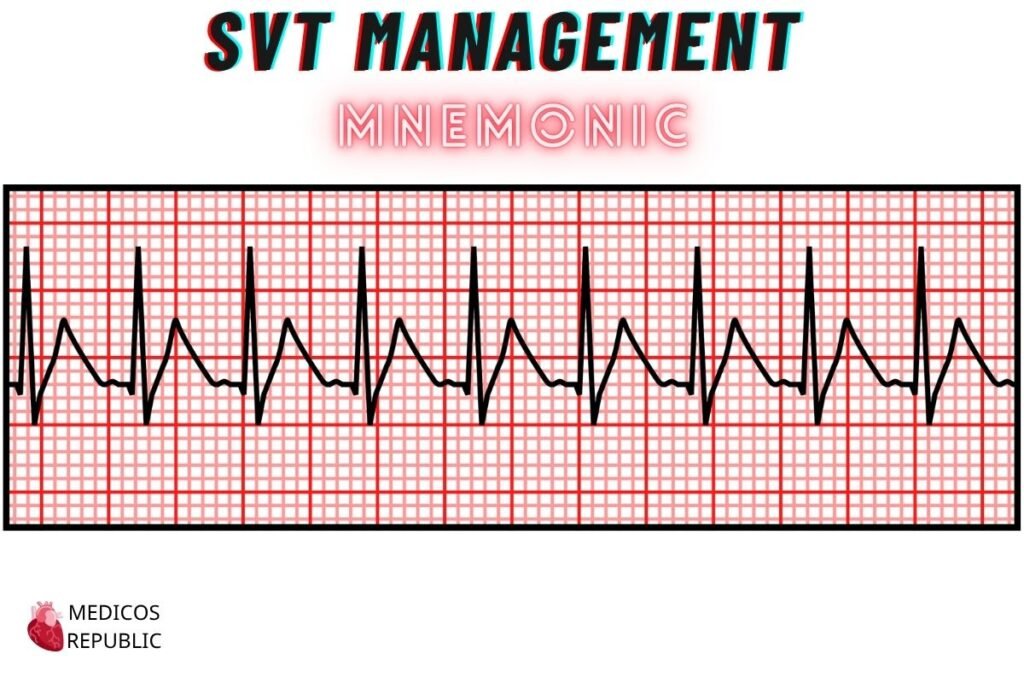Suggest an improvement
var gform;gform||(document.addEventListener(“gform_main_scripts_loaded”,function()gform.scriptsLoaded=!0),document.addEventListener(“gform/theme/scripts_loaded”,function()gform.themeScriptsLoaded=!0),window.addEventListener(“DOMContentLoaded”,function()gform.domLoaded=!0),gform=domLoaded:!1,scriptsLoaded:!1,themeScriptsLoaded:!1,isFormEditor:()=>”function”==typeof InitializeEditor,callIfLoaded:function(o),initializeOnLoaded:function(o),hooks:action:,filter:,addAction:function(o,r,e,t)gform.addHook(“action”,o,r,e,t),addFilter:function(o,r,e,t)gform.addHook(“filter”,o,r,e,t),doAction:function(o)gform.doHook(“action”,o,arguments),applyFilters:function(o)return gform.doHook(“filter”,o,arguments),removeAction:function(o,r)gform.removeHook(“action”,o,r),removeFilter:function(o,r,e)gform.removeHook(“filter”,o,r,e),addHook:function(o,r,e,t,n)null==gform.hooks[o][r]&&(gform.hooks[o][r]=[]);var d=gform.hooks[o][r];null==n&&(n=r+”_”+d.length),gform.hooks[o][r].push(tag:n,callable:e,priority:t=null==t?10:t),doHook:function(r,o,e)var t;if(e=Array.prototype.slice.call(e,1),null!=gform.hooks[r][o]&&((o=gform.hooks[r][o]).sort(function(o,r)return o.priority-r.priority),o.forEach(function(o)”function”!=typeof(t=o.callable)&&(t=window[t]),”action”==r?t.apply(null,e):e[0]=t.apply(null,e))),”filter”==r)return e[0],removeHook:function(o,r,t,n)var e;null!=gform.hooks[o][r]&&(e=(e=gform.hooks[o][r]).filter(function(o,r,e)null!=t&&t!=o.priority)),gform.hooks[o][r]=e));

-
N/AFix spelling/grammar issueAdd or fix a linkAdd or fix an imageAdd more detailImprove the quality of the writingFix a factual error
-
You don’t need to tell us which article this feedback relates to, as we automatically capture that information for you.
-
This allows us to get in touch for more details if required.
-
Enter a five letter word in lowercase
#gform_wrapper_38 .gform_footer visibility: hidden; position: absolute; left: -100vw;
-
This field is for validation purposes and should be left unchanged.
/* = 0;if(!is_postback)return;var form_content = jQuery(this).contents().find(‘#gform_wrapper_38’);var is_confirmation = jQuery(this).contents().find(‘#gform_confirmation_wrapper_38’).length > 0;var is_redirect = contents.indexOf(‘gformRedirect(){‘) >= 0;var is_form = form_content.length > 0 && ! is_redirect && ! is_confirmation;var mt = parseInt(jQuery(‘html’).css(‘margin-top’), 10) + parseInt(jQuery(‘body’).css(‘margin-top’), 10) + 100;if(is_form)jQuery(‘#gform_wrapper_38’).html(form_content.html());if(form_content.hasClass(‘gform_validation_error’))jQuery(‘#gform_wrapper_38’).addClass(‘gform_validation_error’); else jQuery(‘#gform_wrapper_38’).removeClass(‘gform_validation_error’);setTimeout( function() /* delay the scroll by 50 milliseconds to fix a bug in chrome */ jQuery(document).scrollTop(jQuery(‘#gform_wrapper_38’).offset().top – mt); , 50 );if(window[‘gformInitDatepicker’]) gformInitDatepicker();if(window[‘gformInitPriceFields’]) gformInitPriceFields();var current_page = jQuery(‘#gform_source_page_number_38’).val();gformInitSpinner( 38, ‘https://geekymedics.com/wp-content/plugins/gravityforms/images/spinner.svg’, true );jQuery(document).trigger(‘gform_page_loaded’, [38, current_page]);window[‘gf_submitting_38’] = false;else if(!is_redirect)var confirmation_content = jQuery(this).contents().find(‘.GF_AJAX_POSTBACK’).html();if(!confirmation_content)confirmation_content = contents;jQuery(‘#gform_wrapper_38’).replaceWith(confirmation_content);jQuery(document).scrollTop(jQuery(‘#gf_38’).offset().top – mt);jQuery(document).trigger(‘gform_confirmation_loaded’, [38]);window[‘gf_submitting_38’] = false;wp.a11y.speak(jQuery(‘#gform_confirmation_message_38’).text());elsejQuery(‘#gform_38’).append(contents);if(window[‘gformRedirect’]) gformRedirect();jQuery(document).trigger(“gform_pre_post_render”, [ formId: “38”, currentPage: “current_page”, abort: function() this.preventDefault(); ]); if (event && event.defaultPrevented) return; const gformWrapperDiv = document.getElementById( “gform_wrapper_38” ); if ( gformWrapperDiv ) const visibilitySpan = document.createElement( “span” ); visibilitySpan.id = “gform_visibility_test_38”; gformWrapperDiv.insertAdjacentElement( “afterend”, visibilitySpan ); const visibilityTestDiv = document.getElementById( “gform_visibility_test_38” ); let postRenderFired = false; function triggerPostRender() if ( postRenderFired ) return; postRenderFired = true; jQuery( document ).trigger( ‘gform_post_render’, [38, current_page] ); gform.utils.trigger( event: ‘gform/postRender’, native: false, data: formId: 38, currentPage: current_page ); gform.utils.trigger( event: ‘gform/post_render’, native: false, data: formId: 38, currentPage: current_page ); if ( visibilityTestDiv ) visibilityTestDiv.parentNode.removeChild( visibilityTestDiv ); function debounce( func, wait, immediate ) var timeout; return function() var context = this, args = arguments; var later = function() timeout = null; if ( !immediate ) func.apply( context, args ); ; var callNow = immediate && !timeout; clearTimeout( timeout ); timeout = setTimeout( later, wait ); if ( callNow ) func.apply( context, args ); ; const debouncedTriggerPostRender = debounce( function() triggerPostRender(); , 200 ); if ( visibilityTestDiv && visibilityTestDiv.offsetParent === null ) const observer = new MutationObserver( ( mutations ) => mutations.forEach( ( mutation ) => if ( mutation.type === ‘attributes’ && visibilityTestDiv.offsetParent !== null ) debouncedTriggerPostRender(); observer.disconnect(); ); ); observer.observe( document.body, attributes: true, childList: false, subtree: true, attributeFilter: [ ‘style’, ‘class’ ], ); else triggerPostRender(); } );} );
/* ]]> */

Introduction
Ultrasound is a common imaging modality that allows the visualisation of internal structures in real time. Point-of-care ultrasound (POCUS) is performed at the patient’s bedside, and the results are immediately available to the operator.1 As such, it is becoming increasingly popular for diagnosis and management purposes. POCUS can also be used in other settings, including ambulances, general practice, and resource-limited settings.
Ultrasound code of conduct
- POCUS is rarely used to rule out pathology
- POCUS should be used in accordance with local hospital guidelines, which often requires credentialing or accreditation
- Ensure patient consent, privacy and comfort throughout
- Document/capture your findings
- Seek help if you are unsure of any findings
- Ultrasound is a radiation-free method of imaging, so the risks to the patient are minimal
Indications for POCUS
Ultrasound imaging is routinely requested or used at the point of care. Common indications for POCUS include:
- Trauma: free fluid, pneumothorax, cardiac tamponade
- Cardiac: ventricular function, pericardial effusion, preload assessment, valvular assessment
- Lung: pleural effusion, lung consolidation
- Abdomen: gallstones, hydronephrosis, bladder volume
- Obstetrics and gynaecology: pregnancy confirmation, ectopic pregnancy
- Vascular: assessment of deep-vein thrombosis, aortic aneurysm
- Musculoskeletal: tendinopathies
- Procedures: vascular access, fluid drainage
- Shock: unexplained hypotension, fluid status
Ultrasound basics
Ultrasound imaging
An ultrasound machine produces an on-screen image by emitting and recording reflected sound waves and interpreting this using specialty software.
1. High-frequency sound waves are emitted from a transducer
2. These sound waves interact with different tissue types in different ways, with some of them being reflected back towards the transducer
3. These reflected sound waves are then detected by the ultrasound transducer
4. The sound waves are then transformed into an image by specialist software
Wave physics
Sound can be expressed mathematically as a waveform, with all waves having a frequency, wavelength and amplitude.


Understanding the key relationships between wave properties will allow you to optimise ultrasound images:
↑ frequency = ↓ wavelength = ↑ resolution and ↓ depth of field (and vice versa)
Echogenicity
Echogenicity refers to how bright or dark an image appears on the screen. This is related to how strong the reflected signal from that tissue is. The denser the structure, the more ultrasound waves it reflects.


Hyperechoic means the structure reflects a lot of sound, and so appears bright (e.g. bone, cartilage, fat).
Hypoechoic means the structure reflects some sound, and so appears grey (e.g. muscle).
Anechoic means the structure reflects no sound, and so appears black (e.g. fluid).
Artefacts
Because the ultrasound machine makes a number of assumptions about the nature of the reflected waves coming back to it (and sometimes these assumptions are incorrect) occasionally the device can generate images that aren’t real. Examples of these are mirror image artifacts, reverberation artifacts, and aliasing. Be careful of these when imaging, as they can mimic real pathology.
Imaging planes
Long axis: the probe is aligned parallel to the structure’s longest dimension. This gives a lengthwise view.
Getting started
Ultrasound machines range from large workstations found in hospitals to portable handheld devices ideal for bedside use. Each type varies in size, functionality, and imaging capabilities, catering to different clinical needs.
Larger systems feature numerous buttons, knobs, and keys, which can seem intimidating at first. However, their basic functionality is similar to any imaging device, like a camera. This guide will discuss general principles applicable to all machine brands. Handheld machines utilise a mobile device to operate, however, the interface is usually easy to manipulate.
Turning the machine on
Turning on the machine is easy, but often overlooked. There is often a button in the upper left or right corner of the keypad.
Selecting the right probe
Most general ultrasound machines will have 3 different types of ultrasound probe: linear, curvilinear and phased. Choosing the right probe relies on your understanding of basic wave physics and the footprint (shape) of the probe. You’ll need to pick the right one that’s appropriate to the structure you want to image.
Linear probe
Reasons to pick the use of a linear probe:
- High frequency = high resolution = low depth (superficial structures)
- Good for vascular access, nerve blocks and superficial lung tissue


Curvilinear probe
Reasons to pick the use of a curvilinear probe:
- Low frequency = high resolution = high depth (deep structures)
- Useful for abdominal, pelvic ultrasound and in obstetrics and gynaecology
- Footprint designed for deeper structures


Phased array/cardiac
Reasons to pick the use of a cardiac probe:
- Low frequency = high resolution = high depth (deep structures)
- Footprint designed to fit in between ribs and is classically used for echocardiography, and sometimes for lung ultrasound


The probe
The probe consists of several key parts, which you should be able to recognise.


Holding the probe
The images below demonstrate two ways to hold an ultrasound probe appropriately. The choice between these grips will depend on the structure being scanned and the patient’s positioning. For added stability, keep the base of your hand anchored against the patient’s body.
Probe orientation
The probe orientation indicator is a small notch, ridge, or dot on one side of an ultrasound probe, which helps maintain spatial orientation during scanning. This marker corresponds with the screen orientation marker, typically a small dot or triangle at the top of the ultrasound image. The probe marker should be aligned with the screen marker, according to scanning convention.
To ensure alignment, lightly tap the side of the probe with the indicator – this should produce a noticeable movement or shadow on the corresponding side of the ultrasound screen.


Probe movements
Correct probe movements are essential for getting clear and accurate ultrasound images. If you don’t move the probe correctly, you might miss important details or see blurry images. In the UK, most operators scan from the patient’s right-hand side, with the machine’s screen on the left, but this is not mandatory.
The various probe movements include sliding, tilting, rocking, sweeping and rotating.


Probe maintenance
- Handle with care: avoid dropping or bumping the probe against hard surfaces
- Clean after every use: disinfect the probe properly to prevent infections
- Store correctly: keep probes in designated holders to avoid cable tangling or damage
- Protect the cable: avoid tightly wrapping cables around the machine or wires trailing on the floor as this can cause wear and tear
Choosing the right mode
B-Mode (brightness mode)
B-mode is the most common ultrasound mode. It provides a 2D greyscale image of structures and is used for general imaging, such as viewing organs or identifying fluid.


M-Mode (motion mode)
M-mode displays motion over time, using a single line of ultrasound waves. It is especially useful for tracking moving structures, like heart valves or lung tissue, during breathing. For advanced users, specific measurements can be taken using M-Mode.


Optimising your image
Getting a better ultrasound scan is no different than taking a nice picture on a camera; you will need the right magnification, brightness, and focus. These concepts are given special words in ultrasound scanning.
Depth
Adjusts the depth of the display, in centimetres on the side of the ultrasound monitor, usually with a knob. Increase depth to see deeper structures or decrease it to focus on superficial areas. Aim to centre the area of interest on the screen.
Gain
Gain controls the brightness of the image, usually with a knob. Increasing gain makes the image brighter, while decreasing it makes it darker. Adjust the gain to visualise structures without making the image too bright or washed out.
Time gain compensation
Time gain compensation (TGC) fine-tunes brightness at different depths. For example, you can brighten deeper areas while keeping superficial structures less bright for a balanced image.
Focus
Focus concentrates the ultrasound waves at a specific depth to sharpen the resolution. Position the focus marker at the level of the structure you want to examine for the clearest image. Many modern machines automatically adjust this.
Doppler imaging
Advanced ultrasound users may want to analyse the direction and/or velocity of blood flow, which can be used for diagnostic purposes. This can be done with colour and pulsed-wave Doppler, respectively.
Colour Doppler
This visualises blood/fluid flow direction.


Doppler flow
With colour Doppler, the colour seen is dependent on the direction of the fluid flow related to the probe.
Blue indicates movement away from the probe, and red indicates movement towards the probe.
This can be remembered as BART.
Pulsed-wave Doppler
This measures blood flow velocity at a specific location.


There are other more specialised forms of Doppler, such as continuous, power and tissue Doppler, used for specific measurements.
A quick start guide
1. Have a clinical question in mind (e.g. does this patient have a deep venous thrombosis?)
2. Turn the machine on
3. Choose the right probe, preset and position your patient (and yourself) comfortably
4. Apply lots of ultrasound gel
5. Make good contact between the probe and skin (whilst ensuring the patient is comfortable)
6. Optimise your image by manipulating depth and gain
7. Use ‘freeze’ to take a still image and ‘cine’ to take a short recording
8. Follow the ultrasound code of conduct
Reviewer
Dr Segun Olusanya
Consultant in Intensive Care Medicine
Editor
Dr Jamie Scriven
References
- Díaz-Gómez JL, Mayo PH, Koenig SJ. Point-of-Care Ultrasonography. New England Journal of Medicine. 2021. Available from: [LINK].
Image references
- Figure 1. CNX OpenStax. License: [CC BY 4.0]
- Figure 2. Nevit Dilmen. Adapted by Geeky Medics. License: [CC BY-SA 3.0]
- Figure 29. Life Image Inc. Adapted by Geeky Medics. License: [CC BY 3.0]
- Figure 30. Nevit Dilmen. License: [CC BY-SA 3.0]
UltraLearn
The UltraLearn Project is a student-led, clinician-supervised initiative whereby students across UK medical schools gain confidence and interest in the basics of POCUS. Find out how you can join the community @ultralearnpocus on Instagram, X and LinkedIn.

Discover more from Bibliobazar Digi Books
Subscribe to get the latest posts sent to your email.






















